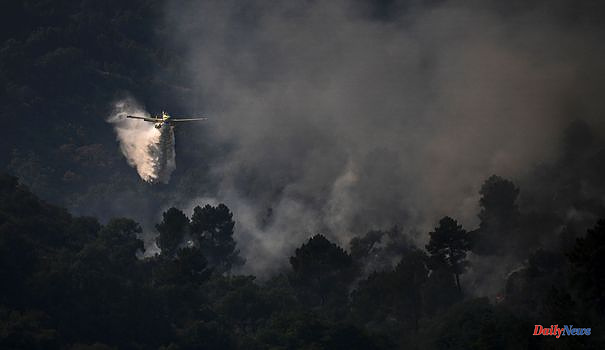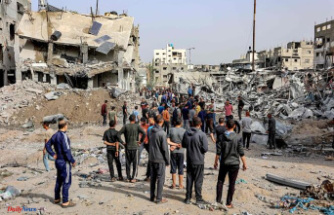"The situation is even worse than expected, although we expected temperature anomalies thanks to the long-term (weather) forecast," Jesus San Miguel, coordinator of the European Fire Information System, told AFP. forest (EFFIS). For him there is no doubt: "the heat wave is decisive (in the situation) and clearly linked to global warming".
In the 27 countries of the European Union, fires have thus ravaged a total of 517,881 hectares since the beginning of the year (figures from July 16), i.e. just over 5,000 km2, equivalent to the surface of a French department. like Mayenne, or the islands of Trinidad and Tobago in the Caribbean.
For the whole of 2021, although marked by numerous fires in Italy and Greece, 470,359 hectares (4,700 km2) had burned in EU countries, according to data compiled by EFFIS since 2000.
If the trend continues, 2022 could thus equal or exceed 2017, the worst year recorded in the EU since the creation of EFFIS, which had seen 988,087 hectares of vegetation go up in smoke, i.e. nearly 10,000 km2 or the area of a countries like Lebanon.
In the countries most affected by the recent heat waves in June and July, nearly 40,000 hectares have burned in France since the start of the year, compared to just over 30,000 for the whole of 2021, more than 190,000 hectares in Spain , compared to almost 85,000 in 2021, and more than 46,000 in Portugal compared to more than 25,000 in 2021.
Further on, Romania was also hard hit, with 149,264 hectares burned compared to 20,364 in 2021.
- Remarkable duration -
Conversely, Italy or Greece, very hard hit last year, have so far been spared: 25,103 hectares burned against 150,552 in Italy, 7,810 against 130,058 in Greece.
But under the heat wave that hit the west of the continent, near the Atlantic, even countries unaccustomed to such fires see the affected surfaces fly away. Like Great Britain where the temperature exceeded 40°C for the first time this week. Just over 20,000 hectares have burned there since the start of the year, compared to just over 6,000 in 2021, according to EFFIS.
"We knew it was going to be a tough summer and we expect it to continue, we're not even halfway through the fire season," said San Miguel. "Previously the season was concentrated from July to September, now we have longer seasons and very intense fires."
“What is remarkable is the duration for which they burn”, agrees Mark Parrington, scientific manager of the European Copernicus Atmosphere Monitoring Service (CAMS).
"These are not phenomena that we usually see in Europe," he continues, but as a result of the warming, the soils and the vegetation are drying out and "there is a lot of fuel".
With these changes in physical conditions, "there is a clear upward trend in the risk of fire in southern and central Europe", underlines the specialist.
These more numerous and intense fires affect the quality of the air breathed by the populations. In the south-west of France, the fumes, loaded with particles and nitrogen dioxide, were thus felt in Bordeaux, whose agglomeration has more than 800,000 inhabitants, and even in Paris, more than 500 km away.
And by burning, forests also emit CO2, one of the greenhouse gases contributing to global warming. In quantities with negligible effects in absolute terms for Europe. But the trees that have disappeared will no longer absorb carbon either.












